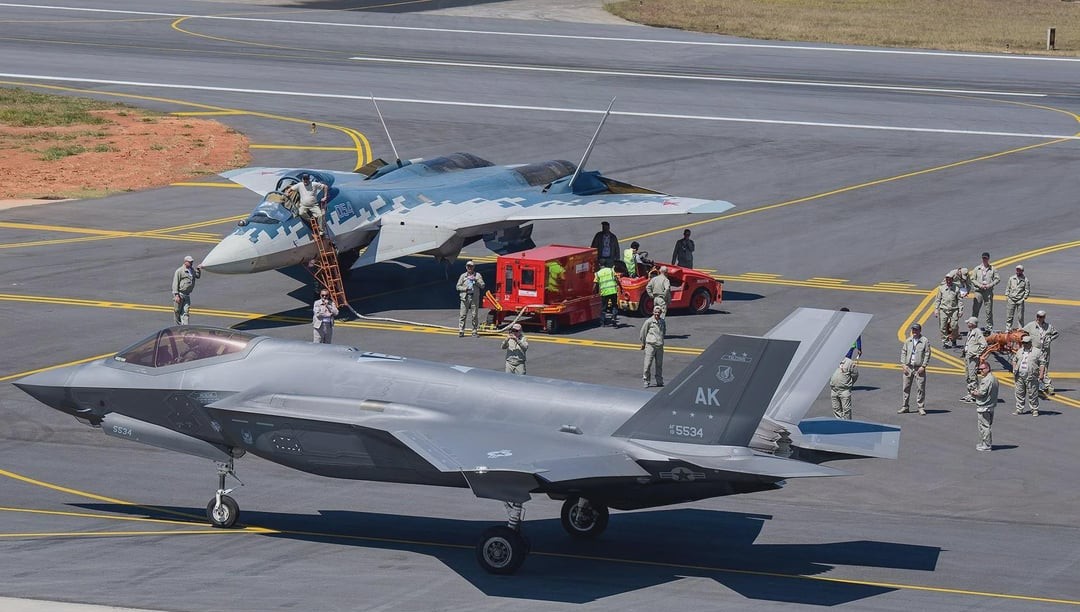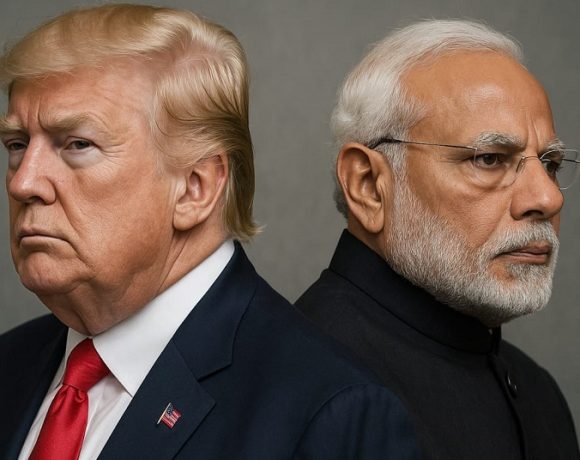
India’s Next-Gen Fighter Conundrum: Weighing the Su-57, F-35, and Rafale Amidst AMCA Aspirations
Aero India 2025: A Showcase of Airpower and Strategic Partnerships
Aero India 2025, held at the Yelahanka Air Force Station in Bengaluru from February 10 to 14, provided an expansive platform for global aerospace giants to showcase their latest advancements. This biennial airshow, often regarded as Asia’s largest aerospace and defense exhibition, witnessed participation from over 30 countries, with more than 150 international defense companies displaying their cutting-edge technologies.
Among the most significant highlights of this year’s event was the first-ever face-off between the American Lockheed Martin F-35 Lightning II and the Russian Sukhoi Su-57 Felon on Indian soil. These two fifth-generation stealth fighters, which represent opposing philosophies of aerial warfare, became the centerpiece of strategic discussions within defense circles. Their presence was particularly important, as India actively explores options to modernize its air force and fill the capability gap caused by its dwindling squadron strength.
Key Aircraft on Display:
- Fighter Jets: Lockheed Martin F-35, Sukhoi Su-57 Felon, HAL Tejas Mk1A, Dassault Rafale F4, Eurofighter Typhoon, Boeing F-15EX, and Saab Gripen E.
- Trainer Aircraft: HAL HTT-40, HAL HJT-36 Yashas.
- Helicopters: HAL Light Utility Helicopter (LUH), HAL Light Combat Helicopter (LCH) Prachand.
- Drones and UAVs: DRDO Archer-NG, HAL CATS Warrior, IdeaForge next-gen surveillance drones.
- Transport Aircraft: Embraer KC-390 Millennium, Airbus C295 (India’s new transport fleet under production with Tata in India).
While the aerial displays mesmerized attendees, the biggest talking points at the event revolved around India’s next big fighter jet acquisition. With the indigenous Advanced Medium Combat Aircraft (AMCA) in development, the arrival of the Su-57 and F-35 at the same event presented India with a unique choice—should it rely on an interim foreign fighter jet, or push ahead with AMCA?
India’s AMCA Ambitions: Aiming for Indigenous Air Superiority
India’s AMCA project, spearheaded by Hindustan Aeronautics Limited (HAL) and the Aeronautical Development Agency (ADA), represents its ambition to develop an indigenous fifth-generation stealth fighter.
Key Features of AMCA:
- Stealth Design with internal weapons bays, reduced radar cross-section, and radar-absorbent materials.
- Supercruise Capability, allowing sustained supersonic speeds without afterburners.
- Next-Gen Avionics & AESA Radar, featuring sensor fusion, AI-based situational awareness, and electronic warfare capabilities.
- Indigenous Engine Development, with future variants (AMCA Mk2) aiming for a more powerful engine in collaboration with international partners.
Production Timeline:
- First Prototype Rollout: 2026-27
- Maiden Flight: 2028
- Production Start: 2032
- Operational Induction: 2034-35
While AMCA promises strategic autonomy, its timeline means the IAF won’t have a homegrown fifth-gen fighter for at least another decade. This leaves a crucial gap in India’s airpower capabilities, forcing the government to explore stopgap solutions—and that’s where Russia’s Su-57 and the West’s F-35/Rafale offers come into play.
Russia’s Su-57 Offer: What’s on the Table?
During Aero India 2025, Russia formally proposed co-producing the Su-57 Felon in India under the “Make in India” program, with full technology transfer. The offer includes:
- Local Production with Hindustan Aeronautics Limited (HAL), reducing costs.
- Access to Stealth and Avionics Tech, potentially benefiting AMCA.
- Expedited Fighter Induction, as the Su-57 is already in service.
- Lower Cost (~$50-60 million per unit) compared to Western alternatives.
Analyzing the Su-57 Offer: The Pros and Cons
Potential Benefits for India:
- Short-Term Fifth-Gen Capability: Since AMCA won’t be ready until 2034, Su-57s could fill the void against China’s J-20 and Pakistan’s potential J-31 acquisition.
- Technology Transfer for AMCA: India could gain insights into stealth materials, radar-absorbing coatings, and avionics for AMCA.
- Cost-Effectiveness: At nearly half the price of an F-35, Su-57s offer an affordable fifth-gen platform.
- ‘Make in India’ Push: Domestic production would generate jobs and boost India’s aerospace sector.
Major Concerns:
- Inferior Stealth Capabilities: Su-57 is not as stealthy as the F-35 due to a higher radar cross-section.
- Performance & Reliability Issues: Russia has only produced 30 Su-57s, with a history of delays and a crash in 2019.
- Sanctions & Geopolitical Risks: Buying Su-57 may trigger U.S. CAATSA sanctions, affecting India’s other Western military imports.
- Dependence on Russian Spare Parts: India already faces delays with Su-30MKI upgrades and MiG-29 fleet maintenance.
What About the F-35 or More Rafales?
While India has not officially sought the F-35, its display at Aero India 2025 signals potential U.S. willingness to sell it in the future. On the other hand, France has offered India the Rafale F4/F5 variants as an alternative.
Why the F-35?
- Best Stealth Capabilities among all fighters under consideration.
- Fully Networked Warfare Capabilities with sensor fusion.
- Future-Proofing Against Chinese Threats.
- Access to NATO’s Advanced Weapons Systems.
Concerns with the F-35:
- Limited Tech Transfer—India wouldn’t get to manufacture it locally.
- High Costs ($80-100 million per unit).
- Potential Dependence on U.S. Approvals for maintenance, upgrades.
Why More Rafales?
- Proven Reliability—India already operates 36 Rafales.
- No Political Restrictions, unlike the F-35.
- Easier Maintenance & Training since India is already familiar with the platform.
Conclusion: What Should India Do?
India needs to carefully weigh its long-term AMCA ambitions with the short-term need for an interim fighter solution.
How India Can Leverage These Offers:
- Use Russia’s Offer for AMCA Tech Transfer – If Russia is offering full Su-57 tech, India can extract stealth technology, AESA radar expertise, and engine development insights to fast-track AMCA.
- Negotiate With the U.S. for F-35 or Advanced Tech Transfer – Instead of outright buying the F-35, India could leverage its strategic importance to get access to advanced avionics and weapons systems.
- Expand Rafale Fleet – If the Su-57’s reliability is questionable, India can simply buy 36 more Rafales as a temporary measure.
- Prioritize AMCA Development – India must ensure that any decision on foreign fighters does not delay AMCA’s timeline.
Final Verdict:
- Best Long-Term Strategy: Full commitment to AMCA.
- Best Short-Term Gap Filler: More Rafales (if India can wait) or Su-57 (if technology transfer is genuine).
- Most Future-Proof Solution: F-35 (but unlikely in the near term due to geopolitical constraints).
India holds the bargaining power—if played correctly, it can extract the best technologies from both Russia and the West while ensuring its indigenous AMCA remains the ultimate goal.


















